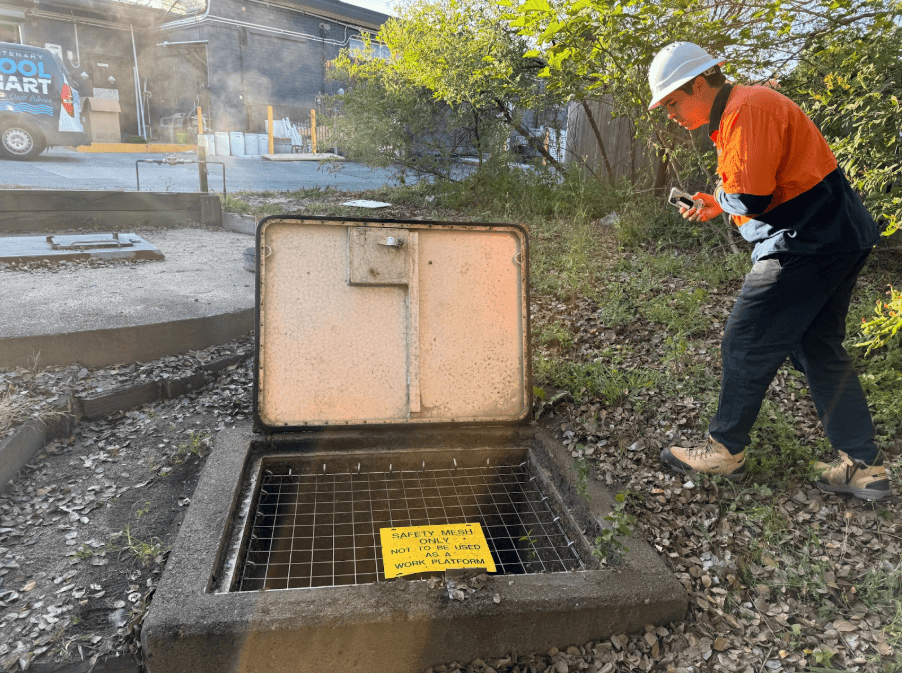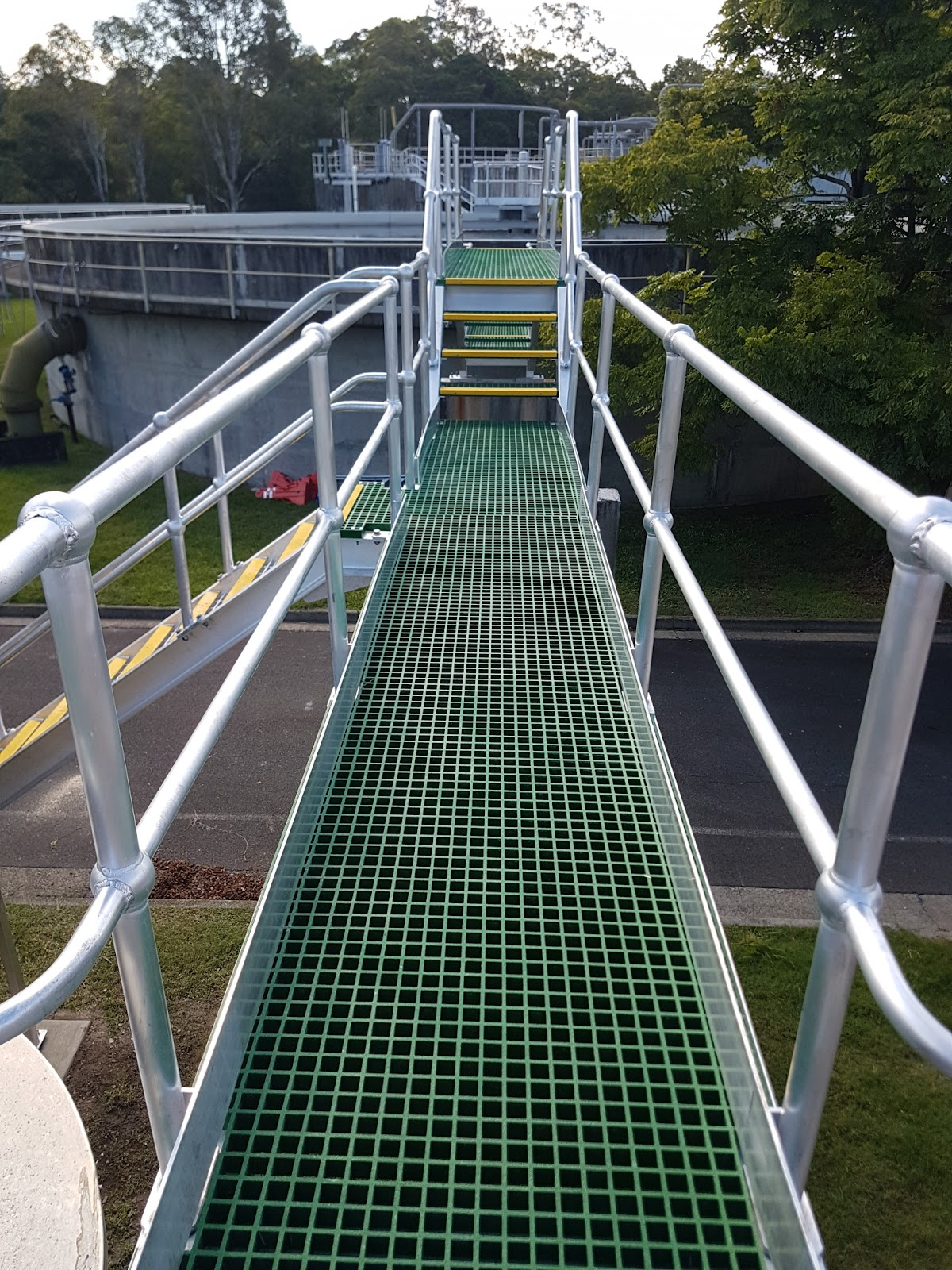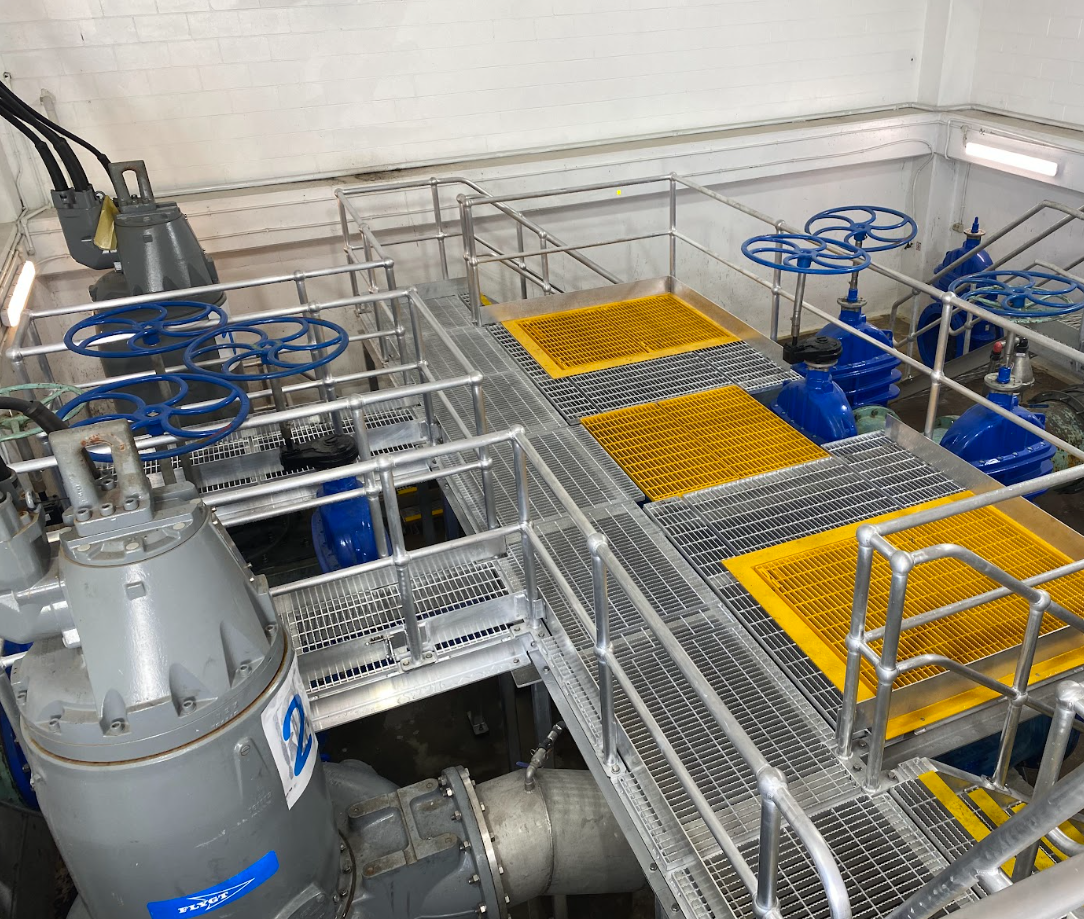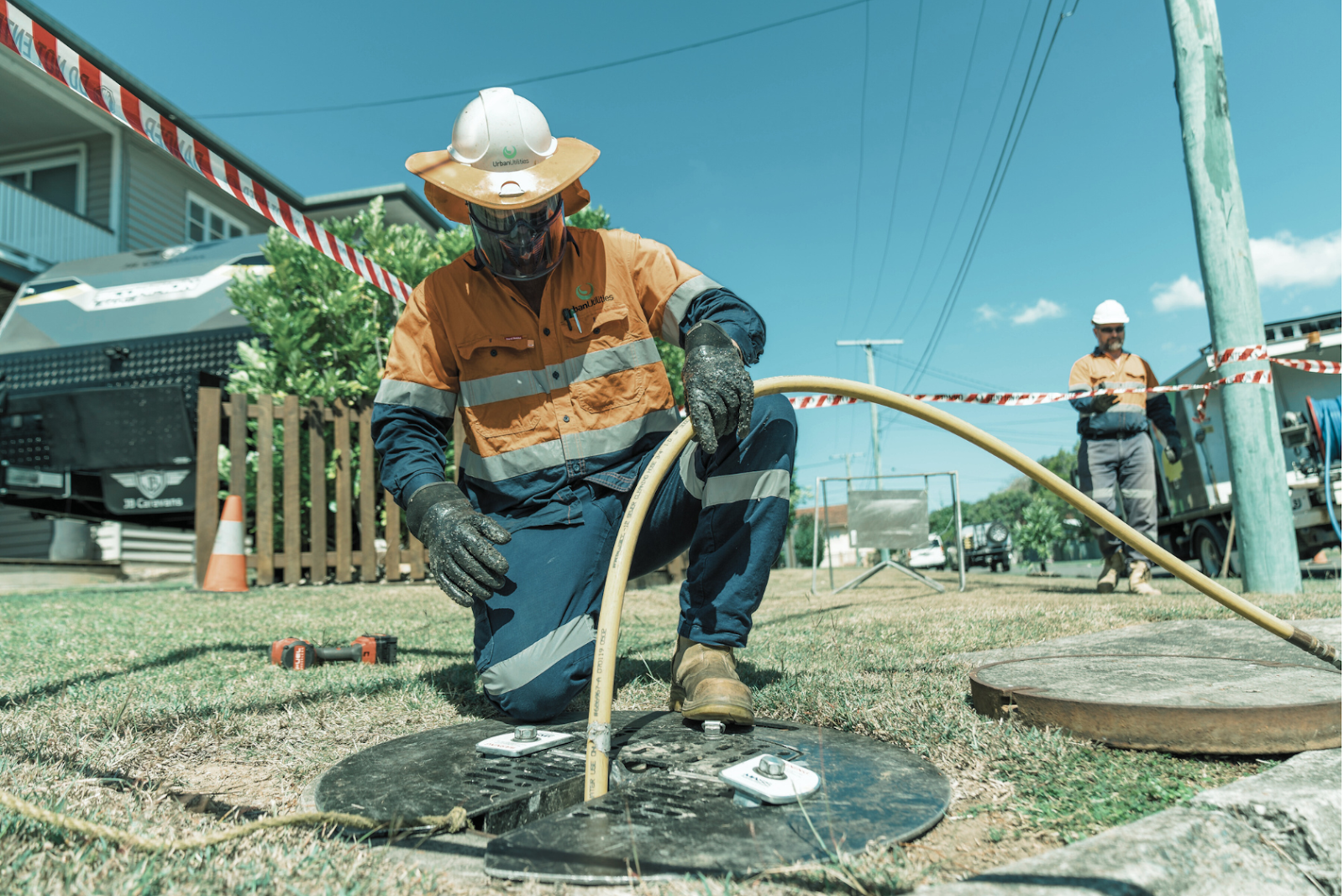Top 5 AS 1657 Non-Compliant Issues We Find in Safe-Access Audits
Most AS 1657 audit failures trace back to five issues: guardrails, ladders, load ratings, slip resistance, and unprotected openings. Learn how to fix non-compliance fast with practical upgrades and Safe Access Condition Assessments.


Most non-compliance stems from edge protection, ladder geometry, slip resistance, load ratings, and unprotected openings. Fixes usually involve guardrail/handrail adjustments, ladder re-design, surface upgrades, and adding engineered secondary fall-prevention (e.g., safety grates, barriers, compliant hatches).
If you’re seeing wobbly guardrails, steep ladders without landings, slippery walkways, underrated platforms, or open pits without secondary protection, you’re likely outside AS 1657:2018. Correcting these five issues removes the bulk of risk and helps you pass audits, fast. For a site-wide review, book a Safe Access Condition Assessment.
Why AS 1657 Matters
AS 1657:2018 sets the design, construction and installation requirements for fixed platforms, walkways, stairways and ladders. i.e. the backbone of safe access.
1) Guardrails & Handrails Out of Spec
Guardrails and handrails are the first line of defence against falls, yet they’re also one of the most common areas of non-compliance during audits. Small variations in rail height, missing midrails, or corroded fixings may seem minor, but they significantly increase the risk of workers stepping or tripping into a leading edge. In many sites, we also find absent toe-boards or infill panels, leaving tools and equipment free to drop onto personnel below.
What AS 1657 Requires
- Top-rail height: Guardrails must be installed at a height between 900–1100 mm above the standing surface. Too low creates fall risk; too high reduces usability and may not provide adequate restraint.
- Midrails and infill: A midrail or compliant infill panel is required to prevent a person passing through or under the top rail. Open spans without secondary protection are a major non-conformance.
- Toe-boards (kick plates): Where there’s a risk of objects falling onto areas below, toe-boards of at least 100 mm height must be provided.
- Continuity: Guardrails must be continuous along the edge, with minimal gaps at joints, corners, or terminations.
- Load capacity: Rails must be designed to resist the minimum loads specified in the standard, ensuring they provide reliable protection in the event of contact or impact.
Why It Matters
Falls from height consistently rank among the leading causes of workplace fatalities and serious injuries in Australia. Even a fall from 1–2 metres can result in life-altering consequences. Inadequate guardrails and handrails not only compromise worker safety but also leave asset owners liable for breaches of WHS regulations.
- Dropped objects: A missing toe-board may allow a small tool to fall from a raised platform. At only 2 m height, even a spanner can generate enough impact energy to cause severe injury.
- Edge exposure: An undersized top rail (e.g., 800 mm high) provides a false sense of security and fails to stop a person from tipping over.
- Corrosion risk: Rusted or weakened fixings may pass a casual visual inspection but could fail under real-world loads.
How to Fix It
- Install compliant guardrails: Ensure top-rail heights are adjusted to 900–1100 mm and that continuous midrails or infill panels are added.
- Fit toe-boards: Where there’s foot traffic or equipment below, add 100 mm toe-boards along the edge.
- Replace non-compliant systems: If existing handrails cannot be economically modified, consider installing new compliant modular guardrail systems.
- Maintenance program: Include corrosion checks and repainting/galvanising in your preventative maintenance schedule.
Audit Checks
When inspecting guardrails and handrails, our audits typically record:
- Height measurement: Confirm top rail falls within the 900–1100 mm band.
- Post spacing: Check spacing between uprights to ensure structural strength.
- Midrail/infill: Verify no gaps wider than the standard permits and that infills are securely fixed.
- Toe-boards: Confirm they are present where required and measure ≥100 mm.
- Condition of fixings: Inspect for rust, loose bolts, cracked welds, or other integrity issues.


2) Fixed Ladders: Pitch, Landings & Fall Distance
Fixed ladders are one of the most common non-compliance points we see during audits. Too often, they’re installed steeper than the allowable angle, or they exceed the maximum continuous flight height without a required landing or change of direction. Both issues dramatically increase fall distance, operator fatigue, and the risk of serious injury.
What AS 1657 Requires
- Pitch (angle): Ladders must fall within 70°–90° from the horizontal (with a preference toward 75°–90° for vertical fixed ladders). Angles steeper than this can make climbing excessively fatiguing and unstable.
- Flight height: No continuous ladder flight should exceed 6 m without a landing or a change in direction. Long uninterrupted climbs not only increase fatigue but also leave operators without a safe resting or recovery point.
- Clearances: Ladders must maintain sufficient clear space behind and to the sides of the rungs to prevent snagging or obstruction.
- Access/egress: Safe transition at the top and bottom is required, often via self-closing gates, guardrails, or handholds extending above the landing.
Why It Matters
According to Safe Work Australia’s data, falls from height remain one of the top three causes of workplace fatalities and account for thousands of lost-time injuries each year.
Ladders, especially fixed access ladders in plants and utilities, feature prominently in these incidents. Non-compliant pitch or missing landings may seem like minor oversights, but they significantly increase both the likelihood and severity of a fall.
- Fatigue factor: A continuous 10–12 m vertical climb without a landing can more than double recovery time at the top platform.
- Fall consequences: A fall from even 3 m is considered high-risk; a non-compliant 9 m ladder flight without landings exposes workers to potentially fatal falls.
- Maintenance reality: Water, wastewater, and utility workers often carry tools, PPE, or hoses. Making safe climbing geometry even more critical.
How to Fix It
- Angle correction: Ensure ladders sit within the 70°–90° pitch range; if too steep, redesign with platforms, stairs, or modular ladder sections.
- Intermediate landings: Install rest platforms or direction changes every 6 m or less of vertical rise.
- Fall-protection integration: For high-risk ladders, integrate cages (where suitable), vertical fall-arrest systems, or retractable lifelines.
- Safe transition: Fit guardrails, self-closing gates, and extended handholds at the ladder’s exit point.
Audit Checks
When auditing ladders, we record:
- Pitch measurement: Verify angle against AS 1657 tolerances.
- Rung spacing: Must be uniform, typically 250–300 mm, to reduce missteps.
- Clearances: Minimum 200 mm behind rungs, with adequate side clearance.
- Landing size: Check depth and width for compliance (typically ≥600 mm).
- Top hardware: Confirm gates self-close, hinges operate freely, and guardrails provide three points of contact during egress.
3) Walkway & Platform Loads (Under-Rated or Unknown)
Walkways and platforms are expected to safely carry workers, tools, and sometimes heavy equipment, but in many audits, we encounter structures that are either under-rated, undocumented, or visibly failing. Signs such as deflection underfoot, noticeable vibration, or cracked coatings are red flags that the structure may not meet AS 1657 requirements.
What AS 1657 Requires
- Live load capacity: Platforms and walkways must be designed for a minimum 2.5 kPa uniformly distributed live load. Sufficient to cover personnel and hand tools.
- Point load capacity: They must also withstand a 1.1 kN concentrated load applied at any point (e.g. a single person standing on one foot, or a heavy object set down suddenly).
- Dynamic performance: Structures must remain stable and not exhibit excessive vibration or sway during normal use.
- Documentation: Compliant platforms should have design records, load-rating plates, or engineering sign-off available for verification.
Why It Matters
When platform strength is unknown, or worse, inadequate. The risks compound quickly:
- Structural failure: Even minor deflection can signal overstress. Left unaddressed, this can escalate to catastrophic collapse.
- Corrosion: Ageing steel platforms often corrode from the underside, where it’s less visible, reducing capacity well below their design rating.
- Overloading in practice: Workers often carry more than just body weight, portable pumps, hoses, or spools can add significant loads. Without correct ratings, these activities can exceed safe limits.
- Compliance risk: Lack of documentation makes it nearly impossible to prove compliance in a regulatory inspection or incident investigation.
According to industry statistics, structural integrity issues are responsible for a significant percentage of access-related failures. Many are preventable with routine inspections and proper certification.
How to Fix It
- Confirm structural adequacy: Commission a structural engineer or safe access specialist to verify platforms against the 2.5 kPa / 1.1 kN requirements (or higher if site-specific risks demand).
- Retrofit or reinforce: Where load capacity is inadequate, strengthen with additional bracing, supports, or by replacing undersized members.
- Upgrade surfaces: Consider aluminium or FRP (fibreglass reinforced plastic) grating where corrosion is an ongoing issue.
- Label load ratings: Clearly mark platforms with maximum load plates to prevent accidental overloading.
- Planned maintenance: Integrate corrosion protection, repainting, and drainage management into asset care plans.
Audit Checks
During a safe access audit, we typically assess:
- Deflection tests: Observe any bounce, vibration, or sagging under normal load.
- Welds & fixings: Look for cracked welds, missing bolts, or signs of movement at joints.
- Corrosion: Inspect underside and concealed areas for rust or pitting.
- Surface condition: Identify ponding, peeling coatings, or build-up of debris that accelerates deterioration.
- Documentation: Check whether engineering certifications, drawings, or load-rating signage are available and up to date.
4) Slip Resistance & Drainage
Slips, trips, and falls remain the single largest category of workplace incidents across industrial sites. In audits, we frequently encounter walkways, stairs, and landings that have smooth surfaces, poor drainage, or contamination from oil, algae, or process by-products. These conditions are not just inconvenient, they are non-compliant under AS 1657 and related standards, which mandate minimum slip resistance for pedestrian surfaces.
What AS 1657 & AS 4586 Require
- Surface classification: The National Construction Code (NCC) references AS 4586, which provides slip resistance classifications (e.g., P ratings for wet pendulum tests, R ratings for ramp tests). Surfaces must meet or exceed the minimum values for their intended use.
- Consistent performance: It’s not enough for a surface to be slip-resistant when new materials and coatings must maintain their performance under site conditions such as water exposure, chemical spills, or heavy wear.
- Drainage: Walkways and landings must be designed to shed water and avoid ponding. Standing water, even in small amounts, significantly reduces friction.
- Tread and nosing design: Stairs must have slip-resistant nosings and consistent tread depth/height to prevent missteps.
Why It Matters
- High incident frequency: Slips account for over one-third of recorded access-related injuries in industrial plants and utility environments.
- Hidden hazards: Smooth steel grating or checker plate may appear adequate when dry, but when exposed to rain, algae, or grease, the risk of slipping increases exponentially.
- Maintenance reality: Even compliant materials can lose their rating over time if they’re not properly cleaned and maintained.
- Legal exposure: A slip incident on a non-compliant surface leaves operators and asset owners liable for negligence under workplace health and safety laws.
How to Fix It
- Upgrade surfaces: Replace worn or smooth surfaces with compliant materials such as serrated steel grating, FRP (fibreglass reinforced plastic) panels, or slip-rated aluminium flooring.
- Improve stair safety: Fit slip-resistant nosings or replace treads to meet AS 4586 classification requirements.
- Drainage solutions: Re-grade surfaces or install drainage channels to eliminate ponding.
- Surface treatments: Apply anti-slip coatings or tapes in lower-risk areas as an interim measure.
- Housekeeping regimes: Establish regular cleaning schedules to remove oil, algae, or sediment before they accumulate.
Audit Checks
During audits, our team typically examines:
- Slip resistance class: Verify the surface rating against AS 4586 using manufacturer data or on-site pendulum testing.
- Contamination presence: Look for algae growth, oil films, or mud deposits in high-traffic zones.
- Drainage effectiveness: Inspect for ponding, especially near landings, pit surrounds, or flat roofs.
- Tread/nosing condition: Check that nosings are intact, slip-resistant, and consistently sized.
- Maintenance practices: Confirm there’s a documented cleaning and inspection program that aligns with the site’s risk profile.
5) Openings, Hatches & Pits Without Secondary Protection
Open access points, whether they’re manholes, service pits, or aluminium hatches, pose some of the most serious risks we encounter during audits. Too often, we see covers opened and left unguarded while crews work nearby. Without secondary protection, a single misstep can result in a fall into confined spaces several metres deep.
This is one of the most preventable non-compliance issues: a compliant cover or hatch with an integrated safety grate, combined with exclusion barriers, eliminates exposure while allowing work to continue efficiently.
What Standards & Best Practice Require
- Fall prevention first: The hierarchy of controls requires that falls be prevented at the source wherever possible - not just mitigated with PPE.
- Secondary protection: When covers are lifted, workers must remain protected by guardrails, self-closing gates, or safety grates that stay in place while the opening is accessed.
- Hold-open devices: Hinged covers and hatches must be secured against accidental closure to prevent crush injuries.
- Work-zone control: Portable barriers and signage must establish a clear exclusion zone around the pit or hatch, particularly in public or trafficable areas.
- Manual handling safety: Access lids often weigh 50–80 kg; compliant handling tools (APS80/APS90, magnetic lifters, grate lifters) are required to reduce strain and injury.
Why It Matters
- Fall severity: Many pits and wet wells are 6–18 metres deep. Falls into these environments are almost always catastrophic.
- Confined space entry: Unprotected openings often lead into confined spaces with hazardous atmospheres, amplifying rescue complexity.
- Dropped objects: Without secondary protection, tools and equipment can easily fall through the opening, injuring workers below or damaging assets.
- Operational downtime: A single fall or near miss often results in site shutdowns, investigations, and significant reputational risk.
How to Fix It
Integrated manhole safety grates: Retrofit or specify covers with hinged, lockable grates that remain in place while the lid is open.
- Guardrails & gates: Install perimeter guardrails with self-closing gates around critical openings, especially at treatment plants or rooftops.
- Portable barriers: Deploy foldable, high-visibility barriers whenever covers are opened in public spaces or roadways.
- Compatible lifting gear: Use purpose-designed manhole cover lifters, openers, or magnetic manhole lid lifters to reduce manual handling risk and maintain cover integrity.
- Training: Ensure crews are trained to set up exclusion zones before commencing work.
Audit Checks
When auditing access covers and openings, we typically record:
Hold-open devices: Confirm hinged lids have robust stays or locks that prevent accidental closure.
Grate integrity: Inspect welds, hinges, and locking mechanisms on safety grates.
Barrier setup: Verify that portable barriers are deployed and visible; check for compliant signage.
Tool compatibility: Confirm operators use correct lifters or openers rather than makeshift tools (e.g., crowbars).
Clear exclusion zone: Measure setback distance and confirm the area is free from tripping hazards or obstructions.

FAQs
Is AS 1657 only for rooftops?
No, while many people first encounter AS 1657 when thinking about rooftop walkways or edge protection, the standard is much broader. It applies to all fixed platforms, walkways, stairways, and ladders used for safe access in industrial environments. That means water and wastewater treatment plants, pump stations, electrical substations, manufacturing plants, and utility corridors all fall under its scope. If workers need to access an elevated, lowered, or otherwise hazardous area by a fixed means, AS 1657 is the benchmark that defines how it must be designed, built, and maintained.
What guardrail height should I use?
The standard specifies a top-rail height between 900 mm and 1100 mm above the standing surface. Anything lower can allow a person to topple over, and anything higher may interfere with usability. In addition:
- Midrails or infill are required to prevent a person from passing through or under the guardrail.
- Toe-boards (kick plates) of at least 100 mm should be installed where there’s a risk of tools or objects falling onto people or equipment below.
- Guardrails must also be continuous and capable of withstanding the loads set out in AS 1657.
Getting these dimensions and features right is not just about compliance, it’s about providing workers with predictable, reliable protection every time they step near an edge.
Do I need landings on long ladders?
Yes, AS 1657 sets strict limits to reduce fatigue and fall risk. A single ladder flight cannot exceed 6 metres without a landing or change in direction. Landings act as a rest point, a recovery platform, and a break in the potential fall distance. This is especially critical in environments like pump stations or treatment plants, where vertical climbs can exceed 10–12 metres. Intermediate landings, rest platforms, or ladder cages/fall-arrest systems are all tools to ensure workers can climb safely, even when the job requires access to deep or elevated assets.
How do I prove compliance?
Demonstrating compliance isn’t just about installing the right equipment, it’s also about having the documentation to back it up. Best practice includes:
- Drawings and engineering calculations that show load ratings and dimensions.
- Product data sheets and certifications for access covers, guardrails, ladders, and grating.
- Inspection and maintenance records to prove the system has been regularly checked and kept in working order.
- Third-party audits or condition assessments, which provide independent evidence that your site meets AS 1657 requirements.
If you don’t already have this documentation, a Safe Access Condition Assessment is a cost-effective way to identify gaps, prioritise upgrades, and build a defensible compliance record.
Summary
The majority of audit failures can be traced back to five recurring problem areas: guardrail and handrail geometry, ladder design, platform load ratings, slip resistance, and unprotected openings. Each of these directly impacts worker safety and site compliance.
By addressing them with AS 1657-aligned upgrades, from correctly specified guardrails and handrails, to fixed ladders with compliant pitch and landings, to structurally rated platforms and slip-tested walkways, you significantly reduce both risk and liability. Just as important is ensuring that openings, hatches, and pits are fitted with integrated safety grates, self-closing gates, or portable barriers, so crews are never exposed to a leading edge.
These improvements not only bring sites into compliance but also enhance productivity, reduce downtime from incidents, and extend the lifecycle of critical assets.
If you want a clear, practical roadmap for achieving compliance across your facility, book a Safe Access Condition Assessment. Our team will audit your site, prioritise the most urgent fixes, and help you implement solutions that deliver the highest safety and compliance gains first.

Visit our office

Gold Coast, QLD Australia
Mass Products™ is based in the Gold Coast, QLD. We offer our services Australia-wide and products internationally.

Phone - domestic
1300 191 960
















.svg)






